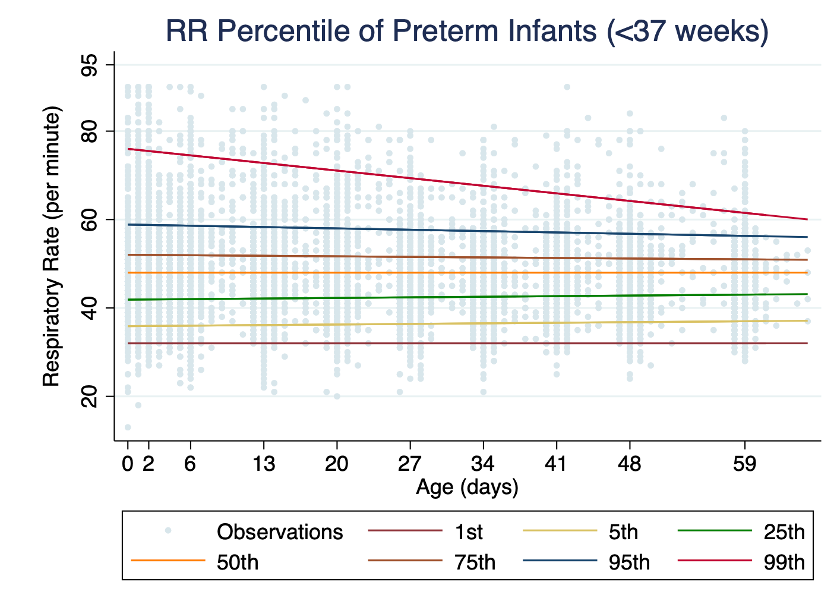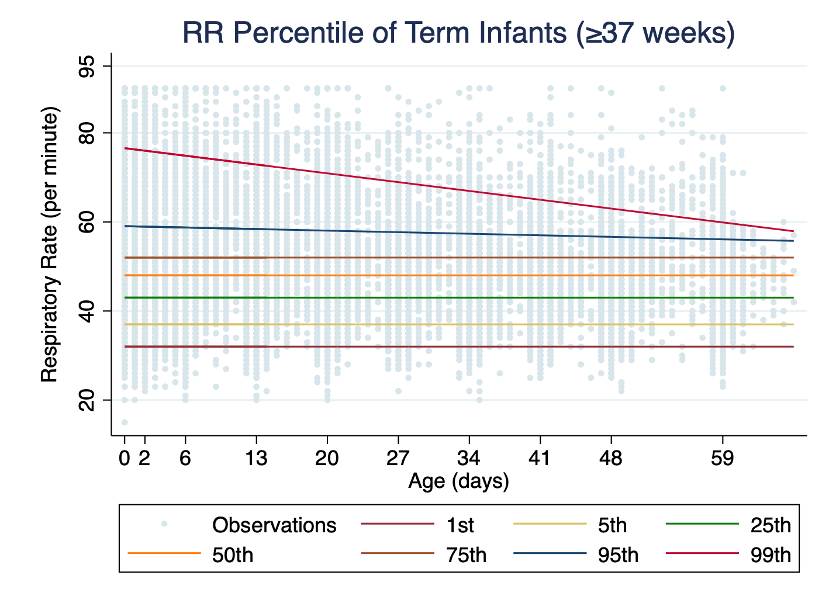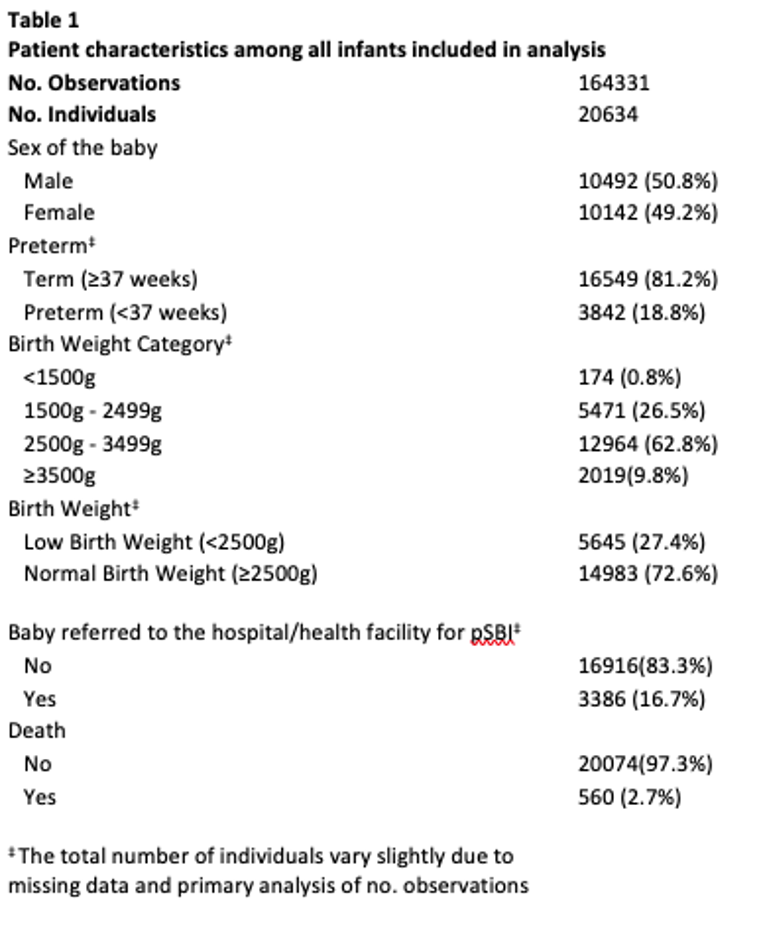Global Neonatal & Children's Health
Session: Global Neonatal & Children's Health 1
479 - Establishing Normative Respiratory Rate Percentiles for Preterm and Term Infants from Birth to 2 Months of Age in Bangladesh: Longitudinal analysis
Friday, May 3, 2024
5:15 PM - 7:15 PM ET
Poster Number: 479
Publication Number: 479.85
Publication Number: 479.85
- EL
Esther Lee, MD, MPH
Assistant Professor
Rush University Medical Center
Chicago, Illinois, United States
Presenting Author(s)
Background: Respiratory rates (RR) of infants undergo rapid physiologic changes early in life. In low- and middle-income countries (LMICS) World Health Organization (WHO) guidelines consider a RR >60 breaths/minute among < 2-month-olds as elevated and a marker for illness, and this threshold is used to make clinical management decisions. As more premature and low-birth-weight infants survive due to improved antenatal and neonatal care in LMICs it is possible WHO RR recommendations may require revisions to account for birth weight (BW) or gestational age (GA). We utilized a large dataset from young infants in Bangladesh to address this key evidence gap.
Objective: 1. Create normative reference percentiles for well infants stratified by BW and GA over the first two months of life.
2. Longitudinally examine RR over the first two months of life by GA and BW.
Design/Methods: A birth cohort from 2011 to 2014 of 21,114 infants and 202,688 total observations was available from the Bangladesh site of the ANISA study. Trained community health workers (CHWs) obtained consent, identified live births, documented BW, conducted physical examinations, and performed up ten home visits in the first 2 months of life. We excluded observations after CHW referral for infants meeting WHO-defined possible serious bacterial infection criteria. We created RR percentiles by CHW visit days during the first 59 days of life, including GA and BW strata, using quantile regression in a series of 100 re-sampled repetitions (Stata Version 17).
Results: Total of 164,331/202,688 (81.1%) RR observations from 20,634/21,114 (97.7%) infants were included in the primary analytic group. In all GA categories: < 32 weeks, 32-36 weeks and 6 days, ≥37 weeks and BW categories: < 1,500g, 1,500-2,499g, 2,500-3,499g, ≥3,500g; RR≥ 60 breaths/minute was observed only in the 99th quantile. The 99th quantiles for RR ranged from on Day 0: (min; max) 73 to 76.6 breaths/minute; and on Day 56: RR 59.9 to 63.4 breaths/minute. All other percentiles had minimal variation in RR from Days 0-59 (Figure 1, Figure 2). A RR decrease over the first two months of life was noted in all GA and BW categories (Figure 1, Figure 2) (BW not shown).
Conclusion(s): We provide evidence that no clinically meaningful difference in RR by GA or BW was observed among young infants over the first two months of life in this large birth cohort from Bangladesh. These population-based data from well infants in Bangladesh representative of the GA spectrum support current WHO guideline recommendations for a RR threshold of 60 breaths/minute or higher for clinical management decision-making.



